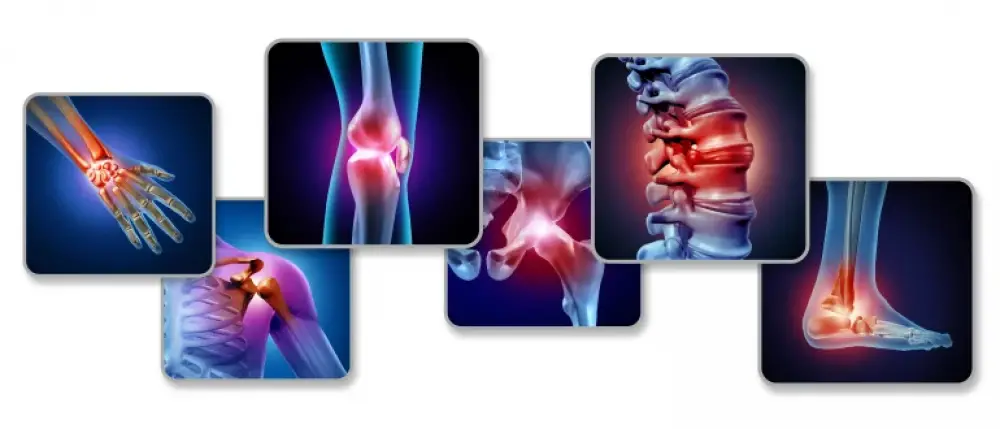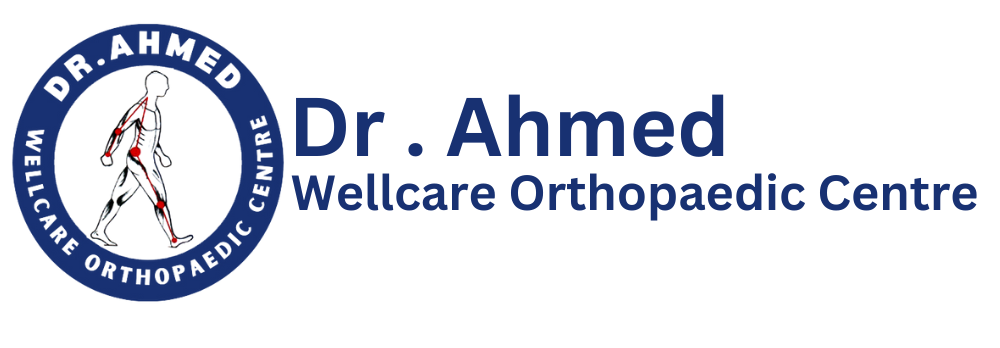Understanding Tech-Related Musculoskeletal Disorders
In recent years, there has been a noticeable increase in musculoskeletal issues directly linked to the pervasive use of technology. These tech-related musculoskeletal disorders encompass a range of conditions that arise from the frequent use of smartphones, tablets, and computers. As our reliance on these devices grows, so does the prevalence of these disorders, which now represent a significant portion of the cases seen by orthopaedic specialists.
Tech-related musculoskeletal disorders are primarily characterized by repetitive strain injuries (RSIs) and the detrimental effects of prolonged static postures. RSIs occur when the same muscle groups are used repeatedly without sufficient rest, leading to inflammation, pain, and potential long-term damage. Common manifestations include conditions such as carpal tunnel syndrome, tendinitis, and epicondylitis, which are often seen in individuals who spend extensive periods typing or using a mouse.
Moreover, prolonged static postures, such as those adopted while sitting at a desk or using handheld devices, can lead to significant musculoskeletal strain. Maintaining a fixed position for extended periods can cause muscle imbalances, decreased circulation, and increased pressure on certain joints and soft tissues. This can result in conditions like lower back pain, neck pain, and postural dysfunctions, which are becoming increasingly common in both young and older populations.
The rise of tech-related musculoskeletal issues signifies a shift in the types of injuries and conditions that orthopaedic professionals must address. Understanding the root causes of these disorders is crucial for developing effective prevention and treatment strategies. As technology continues to evolve and integrate further into our daily lives, it is essential to recognize the impact it has on our musculoskeletal health and take proactive measures to mitigate these risks.
Common Tech-Related Musculoskeletal Issues
In the current technologically-driven era, a range of musculoskeletal problems has emerged, primarily due to prolonged and improper use of handheld devices and computers. Among these, ‘text neck,’ ‘smartphone thumb,’ and carpal tunnel syndrome are some of the most prevalent issues.
‘Text neck’ is a condition caused by the repetitive strain of looking down at a mobile device for extended periods. Symptoms often include neck stiffness, shoulder pain, and chronic headaches. Preventative measures and treatments for text neck focus on maintaining good posture, such as keeping the device at eye level to reduce downward head tilt. Taking regular breaks and performing neck exercises can also aid in alleviating symptoms and preventing the condition from worsening.
‘Smartphone thumb,’ medically known as De Quervain’s tenosynovitis, arises from the repetitive motions of texting and swiping on smartphones. Individuals suffering from this condition typically experience pain at the base of the thumb, swelling, and difficulty gripping objects. To prevent and manage smartphone thumb, it is recommended to use voice-to-text features to minimize thumb movements, take frequent breaks from continuous phone use, and perform thumb stretches to keep the tendons flexible and reduce inflammation.
Carpal tunnel syndrome is another common issue linked to prolonged technology use, particularly with keyboards and mice. This condition occurs when the median nerve is compressed as it travels through the carpal tunnel in the wrist. Symptoms include numbness, tingling, and weakness in the hand and fingers. Preventative strategies involve using ergonomic keyboards and mice that promote a neutral wrist position, maintaining proper hand positioning during typing, and performing wrist exercises to strengthen the muscles and improve flexibility.
Understanding these tech-related musculoskeletal issues and adopting appropriate preventive measures can significantly mitigate their impact, promoting long-term musculoskeletal health in the digital age.
Preventive Measures and Ergonomic Solutions
In addressing today’s orthopaedic problem: the rise of tech-related musculoskeletal issues, it is imperative to adopt preventive measures and ergonomic solutions to mitigate these conditions. The cornerstone of prevention lies in the application of ergonomic principles, which are designed to reduce strain on the body through the optimization of workspace and device usage.
First and foremost, maintaining proper posture is crucial. Ensuring that the spine is aligned and supported while sitting can significantly reduce the risk of musculoskeletal issues. The feet should rest flat on the ground, and the back should be supported by an ergonomic chair that promotes a natural curve in the lower back.
Regular breaks are essential to prevent repetitive strain injuries. It is recommended to follow the 20-20-20 rule: every 20 minutes, take a 20-second break to look at something 20 feet away. This practice helps to alleviate eye strain and encourages movement, which can reduce muscle tension and fatigue.
The use of ergonomic accessories can also play a pivotal role in preventing tech-related musculoskeletal issues. Ergonomic keyboards and mouse pads are designed to minimize strain on the wrists and hands. These accessories help maintain a neutral wrist position, reducing the risk of conditions such as carpal tunnel syndrome.
Setting up an ergonomic workspace involves several practical steps. The computer monitor should be at eye level, about 20-30 inches away from the face, to prevent neck strain. The keyboard and mouse should be placed at a height where the elbows are bent at a 90-degree angle. Additionally, using a document holder can help in maintaining the head and neck in a neutral position when referencing written materials.
Incorporating these preventive measures and ergonomic solutions into daily routines can significantly reduce the incidence of tech-related musculoskeletal issues. By making conscious adjustments to our workspaces and habits, we can promote a healthier and more productive environment.
Education and Exercise for Musculoskeletal Health
As technology becomes an integral part of our daily lives, the incidence of tech-related musculoskeletal issues has surged. Education and exercise play a pivotal role in mitigating these problems. The first step in addressing today’s orthopaedic problem is raising awareness about the adverse effects of prolonged technology use on musculoskeletal health. Many individuals remain unaware that extended hours spent on computers, smartphones, and other devices can lead to chronic pain and long-term physical damage.
Educating the public on proper ergonomics and posture is essential. Simple adjustments, such as maintaining a neutral wrist position, ensuring that screens are at eye level, and using chairs that support the natural curve of the spine, can significantly reduce strain on the muscles and joints. Awareness campaigns and workshops can further highlight the importance of regular breaks and movement throughout the day.
Incorporating regular stretches and exercises into daily routines is crucial to alleviating and preventing discomfort. Exercises targeting the neck, shoulders, hands, and wrists are particularly beneficial. Here are some simple exercises and stretches that can be easily performed at home or in the office:
Neck Stretch: Gently tilt your head towards one shoulder and hold for 15-30 seconds. Repeat on the other side. This stretch helps relieve tension in the neck muscles.
Shoulder Shrugs: Raise your shoulders towards your ears and hold for a few seconds before releasing them back down. Repeat 10 times to release stress in the shoulder muscles.
Wrist Flexor Stretch: Extend one arm in front of you with the palm facing up. Use the opposite hand to gently pull back on the fingers, stretching the wrist and forearm. Hold for 15-30 seconds and switch sides.
Hand Squeezes: Use a stress ball or a rolled-up towel. Squeeze and hold for a few seconds, then release. Repeat 10-15 times to strengthen the hand muscles.
By integrating these simple exercises and stretches into daily routines, individuals can significantly reduce the risk of developing tech-related musculoskeletal issues. Consistent education and proactive measures are key to maintaining musculoskeletal health in the digital age.
Frequently Asked Questions?
1. What are tech-related musculoskeletal issues?
Tech-related musculoskeletal issues refer to physical problems affecting muscles, tendons, joints, and nerves caused by prolonged use of technology, such as smartphones, computers, and gaming consoles. These problems often result from poor posture, repetitive movements, and extended screen time.
2. What are the common tech-related orthopedic problems?
Common issues include “text neck” (neck pain from looking down at devices), carpal tunnel syndrome (caused by repetitive hand and wrist movements), “mouse shoulder” (shoulder strain from prolonged computer use), and lower back pain due to poor posture while sitting.
3. Why are tech-related musculoskeletal problems on the rise?
The rise of these issues is linked to the increased time people spend on computers, smartphones, and other devices for work, entertainment, and communication. Remote work, gaming, and screen-based activities have significantly increased, leading to a more sedentary lifestyle and poor ergonomics.
4. What is “text neck,” and how can it be prevented?
“Text neck” refers to neck strain caused by constantly looking down at phones or tablets. It can be prevented by practicing better posture, raising devices to eye level, taking frequent breaks, and performing neck stretches or exercises.
5. How does prolonged sitting at a computer affect musculoskeletal health?
Prolonged sitting can lead to poor posture, which strains the spine, neck, and shoulders, causing chronic back pain and discomfort. It can also reduce circulation to the lower body, increasing the risk of musculoskeletal problems like hip and lower back pain.
6. What are the symptoms of tech-related musculoskeletal issues?
Common symptoms include neck, shoulder, and back pain, wrist and hand discomfort, tingling or numbness in the hands, joint stiffness, headaches, and muscle fatigue. These symptoms often worsen with extended use of tech devices and poor posture.
7. How can ergonomic adjustments help prevent tech-related musculoskeletal issues?
Ergonomics focuses on optimizing posture and workspace layout to reduce strain on the body. Adjusting the height of screens, using supportive chairs, positioning keyboards at a comfortable level, and taking regular breaks can prevent strain on muscles and joints.
8. What exercises can help alleviate tech-related musculoskeletal problems?
Exercises that strengthen the core, stretch the neck, shoulders, wrists, and back, and improve posture can help alleviate symptoms. Specific exercises include neck stretches, shoulder rolls, wrist flexor stretches, and core-strengthening movements like planks.
9. Who is most at risk of developing tech-related orthopedic problems?
People who spend long hours on devices, such as office workers, students, gamers, and remote workers, are at higher risk. Children and young adults, who frequently use smartphones and computers for extended periods, are also increasingly affected by these problems.
10. How can tech-related musculoskeletal issues be managed or treated?
Treatment typically includes rest, physical therapy, ergonomic adjustments, exercises to strengthen and stretch muscles, anti-inflammatory medications, and sometimes interventions like corticosteroid injections for severe cases. Early recognition and prevention are key to managing these problems effectively.










MagdaZ
August 10, 2024I was examining some of your articles on this internet site and I think this website is rattling informative! Continue posting.Leadership